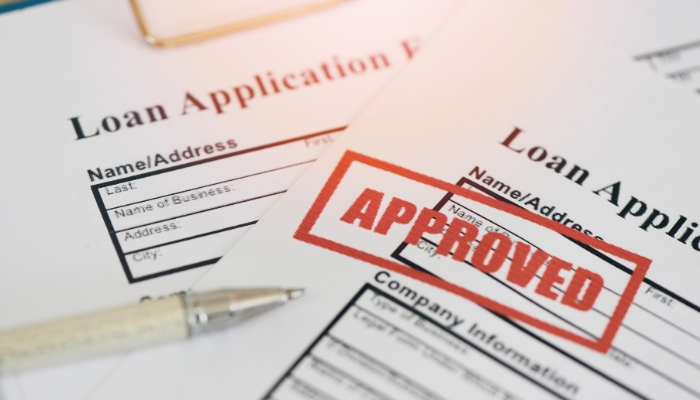U.S. Consumers Rack Up Record Debt
Anúncios
The Federal Reserve’s latest Consumer Credit report, released on Monday, paints a concerning picture of the financial landscape in the United States. Despite the ongoing economic challenges, consumers did not restrain their spending during the recent holiday season. The report reveals a significant surge in consumer borrowing, raising questions about the sustainability of such expenditure patterns and the potential debt consequences for the economy.
Consumer Debt Hits a Record High
In November, consumer borrowing experienced an unexpected spike, surging by $23.75 billion. This far surpassed economists’ expectations of a $9 billion increase and propelled outstanding credit balances beyond the $5 trillion mark for the first time in recorded history. A closer look at the data indicates that the surge was primarily driven by a substantial increase in revolving credit, which includes credit cards. This category witnessed a staggering rise of nearly $19.5 billion, marking the third-highest monthly increase on record since 1943.

[su_button url=”https://www.nab.com.au/personal/credit-cards/qantas-rewards/nab-qantas-rewards-premium-card” style=”flat” background=”#184ca1″ size=”15″ icon=”icon: credit-card-alt”]APPLY FOR NAB QANTAS REWARDS PREMIUM CARD[/su_button]
While an increase in revolving debt can be attributed to various factors, such as population growth and heightened card usage, the report does not provide insights into how the credit is utilized or whether consumers are promptly paying off their outstanding balances. The abrupt rise in credit balances has raised concerns among analysts, particularly as delinquencies have reached their highest levels since 2012.
Ted Rossman, Senior Industry Analyst at Bankrate, notes that credit card and Buy Now, Pay Later usage surged during the holidays, exacerbating the already substantial debt loads. Contrary to the expected normalization of delinquency rates, they have surpassed pre-pandemic levels, indicating potential financial strain on households.
Optimism Amid Economic Uncertainty
Despite the concerning rise in consumer debt, there are mixed signals regarding the overall economic outlook. While Americans have continued to spend robustly, there are indications that the pace of spending growth might decelerate. The Federal Reserve Bank of New York’s Survey of Consumer Expectations reveals a drop in median spending growth expectations to 5.02%, the lowest since May 2021.
Interestingly, the same survey indicates an improvement in Americans’ optimism about the overall economy and, notably, inflation. Consumer expectations for inflation one year from now have fallen to the lowest level in three years. Median inflation expectations across all time horizons – one, three, and five years – have declined, with the nearer-term categories reaching levels not seen since 2020.
The Federal Reserve closely monitors consumer inflation expectations due to their potential impact on economic behavior. If consumers anticipate persistently high prices, they might increase current spending and demand higher wages, potentially triggering a cycle of rising prices and wages.
Ted Rossman sees the decline in inflation expectations as a positive development, suggesting that consumers expecting lower inflation is beneficial for overall sentiment. This shift comes after years of inflation eroding wage gains, contributing to subdued consumer sentiment.
Consumers’ Financial Sentiments
While the economy grapples with uncertainties, consumers’ sentiments about their financial situations present a nuanced picture. Respondents in the New York Fed survey expressed less pessimism about their current household financial situations compared to a year ago. The percentage reporting their current financial situation as “somewhat” or “much” worse than a year ago fell to 38.75%, the lowest since February 2022.
Additionally, respondents’ outlook for the year ahead showed signs of improvement. The percentage anticipating a somewhat or much worse financial situation in the coming year dropped to 25.24%, the lowest since September 2021. Despite a decline in projected earnings growth to 2.45%, the lowest since April 2021, consumers remain positive about the U.S. labor market’s resilience.
The Federal Reserve’s Role and Future Outlook
The Federal Reserve, facing the challenge of reining in inflation, is closely observing these dynamics. The possibility of three rate cuts in 2024 has been suggested, which could impact borrowing costs and influence consumer spending behavior.
The survey indicates a decline in the probability of savings accounts carrying higher interest rates, possibly signaling a shift from peak savings rates. While this could ease access to credit, concerns arise about the potential consequences of elevated consumer debt levels.

Despite these uncertainties, respondents show optimism about credit access and overall financial health. The mean probability of higher unemployment rates in a year’s time dropped to 37.02%, the lowest since March 2022, indicating confidence in the labor market’s stability.
The recent surge in consumer debt, combined with evolving sentiments and economic indicators, underscores the complexities of the current financial landscape. While consumers have shown resilience in their spending, concerns about the sustainability of this pattern and its potential implications on the broader economy persist. The Federal Reserve’s role in navigating these challenges and its decisions on future interest rates will significantly shape the financial landscape in the coming months. As the nation awaits key inflation reports, the delicate balance between consumer optimism and economic uncertainties remains a focal point for analysts and policymakers alike.
See also: Tesla Shorts Lose Big in 2023 as Stock Skyrockets
[su_button url=”https://www.nab.com.au/personal/credit-cards/qantas-rewards/nab-qantas-rewards-premium-card” style=”flat” background=”#184ca1″ size=”15″ icon=”icon: credit-card-alt”]APPLY FOR NAB QANTAS REWARDS PREMIUM CARD[/su_button]






